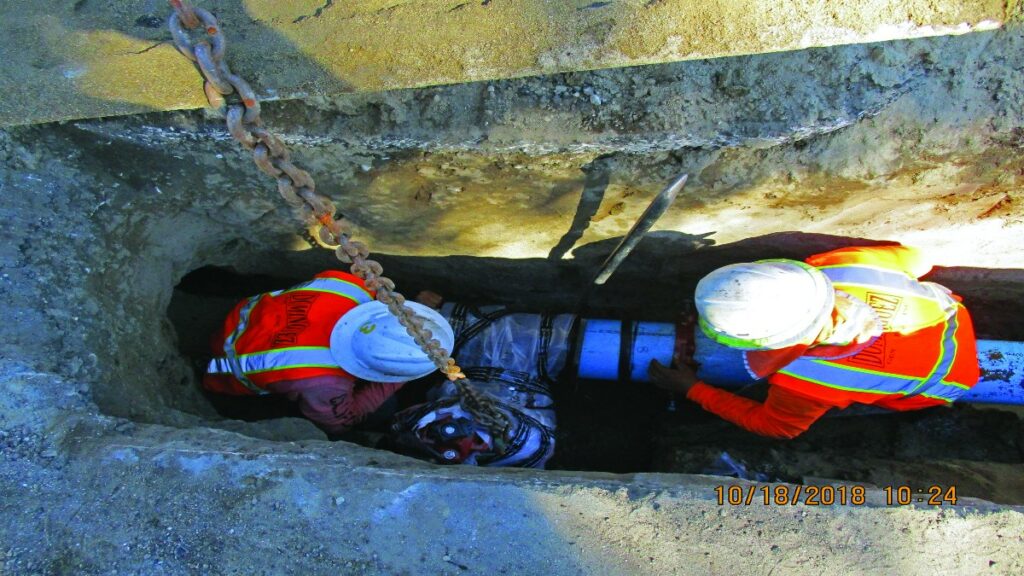On the surface, these would appear to be challenging times for investors in San Dimas-based water utility holding company American States Water Co.
Its water utility subsidiary, Golden State Water, has several systems along California’s Central Coast, one of the regions hardest hit by the ongoing drought, which in turn has forced the utility to pay more for imported water.
Even more challenging is a year-long delay in Golden State Water’s rate case before the California Public Utilities Commission. The case is supposed to set water rates for this year through 2024. Yet as 2022 draws to a close, the case is still lingering before the commission, and a decision is not expected until the first quarter of next year. That has deprived the company of roughly $30 million in additional revenue it had planned for this year.
Assuming the commission ultimately approves the rate-increase package, Golden State is allowed to retroactively claim the increase through surcharges next year on customer bills, though that won’t make its customers happy.
Moreover, one of the company’s retirement plans sustained a $1 million loss in the third quarter, further stressing the bottom line.
Yet investors have been bullish on American States Water stock for the past couple of months, driving the share price up 28% to $99.47 on Nov. 25 – just shy of the all-time high of $103 reached last Dec. 31 – before drifting down a bit due to some profit-taking. The stock closed on Nov. 30 at $97.99 – down about 5% year to date and from its record high.

For comparison, the S&P Global Water Index Exchange Traded Fund – which includes a range of water utility and related stocks – has fallen roughly 20% since the beginning of the year. And the S&P 500 itself has fallen about 17% in that time period.
One analyst said the key to investors’ bullish sentiment for American States Water is a relatively clean balance sheet. The company’s total-debt-to-total-assets ratio stood at 0.35 for the third quarter.
“AWR has the strongest balance sheet in the industry (high investment grade credit metrics, no parent debt, etc., including no need for external equity over our five-year forecast,” Jonathan Reeder, equity analyst with Wells Fargo Securities, said in an October report on American States Water. “We believe this is an important distinction during the current disruption in the capital markets.”
In addition, Reeder said there is investor optimism that the Public Utilities Commission will stick to a preliminary settlement agreement it reached with Golden State Water in late 2021 that would allow the utility to collect an additional $30 million in 2022 revenue above the amount currently allowed and at least that much more in 2023 and 2024.
As a result, Reeder said in laying out the case for bullish sentiment among investors, the company increasingly stands out as an attractive investment against an overall market and utilities sector that has performed poorly so far this year.
While American States Water in its third-quarter earnings release on Nov. 10 said it expected a decision from the Public Utilities Commission on the rate case by the end of the year, a spokesman noted that the commission subsequently extended the deadline to mid-February. While a decision this month is still possible, it now appears more likely to occur next quarter.
Dividend king
There’s one more factor attracting income-seeking investors to American States Water: dividend payouts. While most utilities pay dividends to investors, American States Water stands out as a so-called dividend king. The company has increased quarterly dividend payouts every year for 68 consecutive years. That’s the longest streak of any publicly traded company in the nation, more than household-name companies known for paying dividends, such as Cincinnati, Ohio-based Proctor & Gamble Co. (66 consecutive years of dividend increases), St. Paul, Minn.-based 3M Co. (64 years) and Atlanta-based Coca Cola Co. (60 years).
While American States Water’s current annual dividend of $1.53 per share may not be the highest and represents about a 1.5% payout, given its track record, a shareholder can likely count on that payout increasing each year for the indefinite future.
Reeder himself, though, is not bullish in the short run on American States Water. In late October, he downgraded the stock to “underweight” from “equal weight,” arguing that the recent run-up in the share price has caused it to be somewhat overvalued.
“As a result of the outperformance, shares of AWR now trade at 10-15% P/E premiums to water peers,” he said in the Oct. 20 downgrade report. “While we do not disagree that a premium relative multiple is justified, it is arguably a bit steep given a forecasted growth rate that is relatively consistent with peers.”
Drought impact
Turning to the drought that has cut water allocations for virtually every water agency in the state, Golden State Water has come in for its share of supply cuts, especially in the hardest-hit Central Coast region.
American States Chief Executive Robert Sprowls said in response to emailed questions that its Golden State Water utility has had to pay higher rates for water it imports into its service territory, though he did not disclose how much higher those rates were.
As with much of the rest of the state, the cornerstone of the utility’s response to this supply crunch has been focusing on reducing customer usage of water.
Sprowls said in his responses that Golden State’s water customers have risen to the challenge.
“We are very encouraged by the response of our customers in the Coastal areas,” he said. “During the month of October, our customers in the Coastal system conserved, on average, 18%” compared to October 2020.
Overall, Sprowls said, Golden State Water customers cut their water usage enough to meet Gov. Gavin Newsom’s call for a 15% reduction from 2020 levels.
As for the higher imported water costs, Sprowls said that under Public Utilities Commission rules, the utility can recover from its customers the increased costs of imported water. This is done through a special accrual account that is kept for future bill surcharges.
As the drought continues, Sprowls said in comments made during the company’s earnings call with analysts that, “Golden State Water will continue to work with its local suppliers to assess water supply conditions and water use restrictions in its service areas and make appropriate adjustments as needed.”
American States Water has two other subsidiaries besides Golden States Water. One is a small electric utility serving the Big Bear Lake area in the San Bernardino Mountains. Much like its larger electric utility cousin, Southern California Edison, this utility has in recent years been racing to harden its transmission grid to reduce the risk of wildfires.
Rate increase
In his comments to analysts during the earnings call, Sprowls said that in August the utility submitted its rate case to the Public Utilities Commission; the utility is seeking an increase in electric rates to help offset the higher capital expenditures.

The other subsidiary is an unregulated unit that provides operations, maintenance and construction management services for water distribution, wastewater collection, and treatment facilities located on 11 military bases throughout the country under 50-year privatization contracts with the federal government.
Sprowls said this unit has been dealing with supply-chain disruptions and rising construction costs, partially offset by higher management fee revenue.
Nonetheless, Sprowls said in the earnings call that he is confident that the unit will over time increase its business and therefore its contribution to the company’s overall earnings per share.
“We remain confident that we can effectively compete for military base contract awards in the future based on our proven track record of managing water and wastewater related services for military bases since 2004,” Sprowls said.
